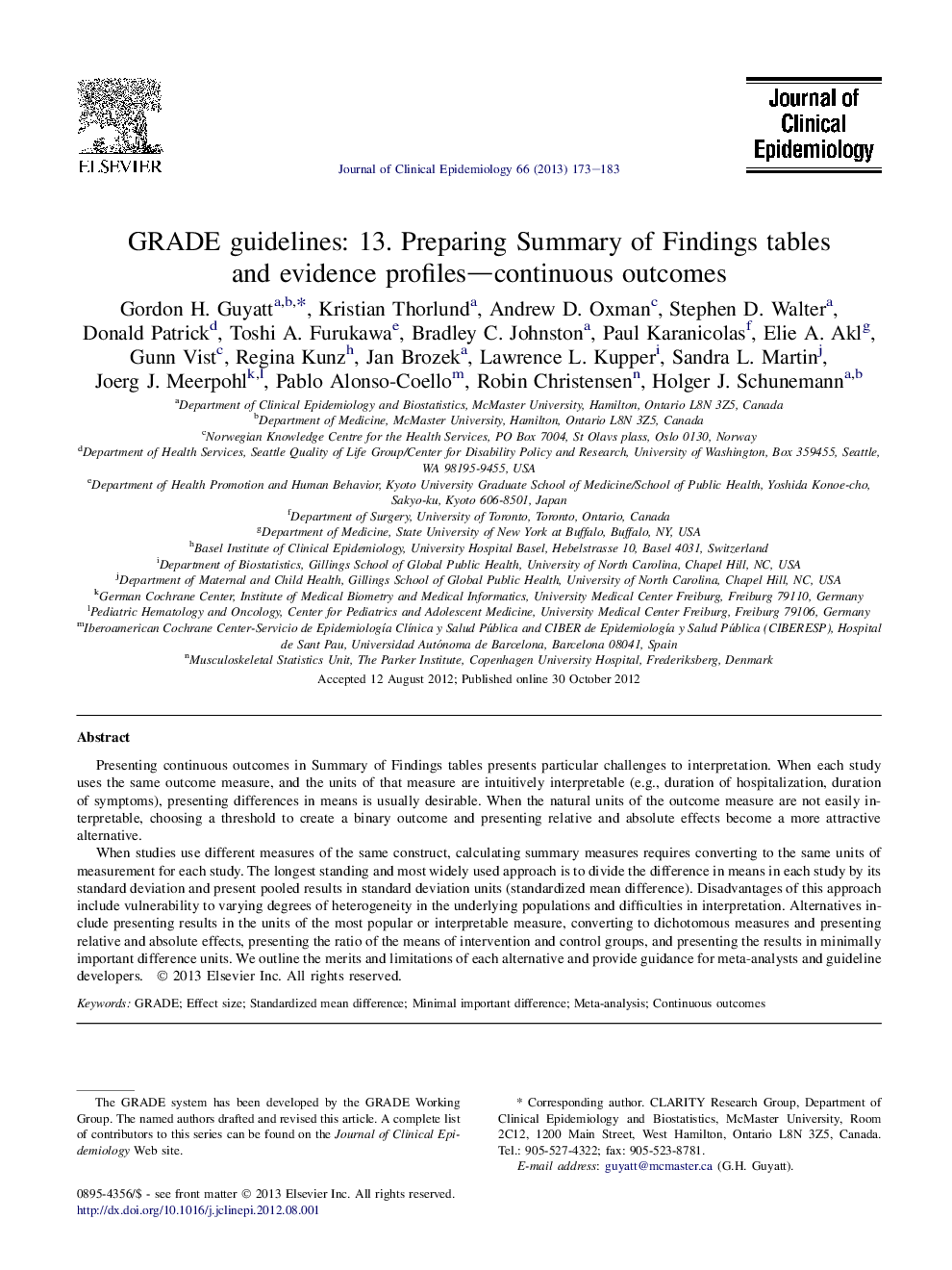| Article ID | Journal | Published Year | Pages | File Type |
|---|---|---|---|---|
| 10513775 | Journal of Clinical Epidemiology | 2013 | 11 Pages |
Abstract
When studies use different measures of the same construct, calculating summary measures requires converting to the same units of measurement for each study. The longest standing and most widely used approach is to divide the difference in means in each study by its standard deviation and present pooled results in standard deviation units (standardized mean difference). Disadvantages of this approach include vulnerability to varying degrees of heterogeneity in the underlying populations and difficulties in interpretation. Alternatives include presenting results in the units of the most popular or interpretable measure, converting to dichotomous measures and presenting relative and absolute effects, presenting the ratio of the means of intervention and control groups, and presenting the results in minimally important difference units. We outline the merits and limitations of each alternative and provide guidance for meta-analysts and guideline developers.
Keywords
Related Topics
Health Sciences
Medicine and Dentistry
Public Health and Health Policy
Authors
Gordon H. Guyatt, Kristian Thorlund, Andrew D. Oxman, Stephen D. Walter, Donald Patrick, Toshi A. Furukawa, Bradley C. Johnston, Paul Karanicolas, Elie A. Akl, Gunn Vist, Regina Kunz, Jan Brozek, Lawrence L. Kupper, Sandra L. Martin, Joerg J. Meerpohl,
